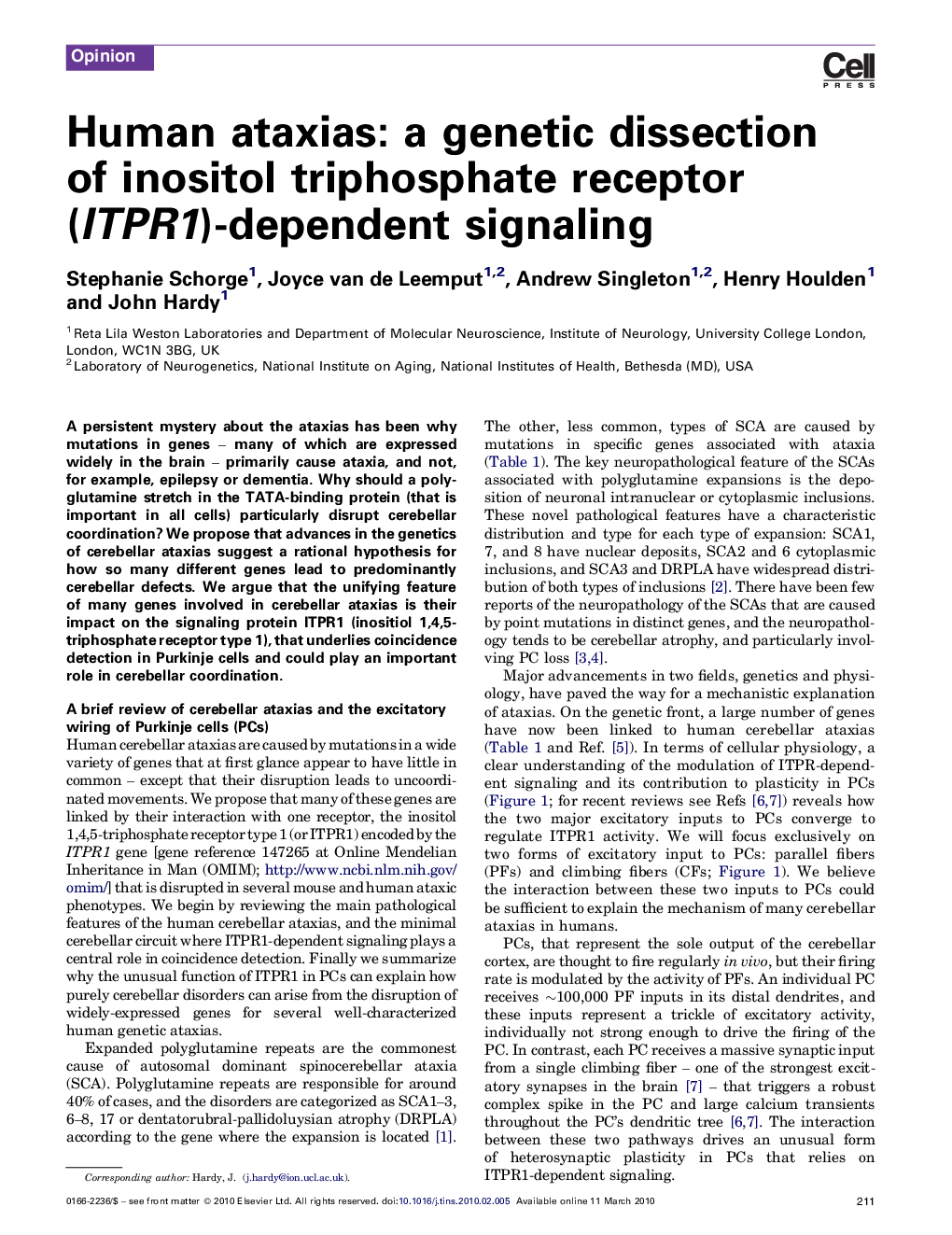| Article ID | Journal | Published Year | Pages | File Type |
|---|---|---|---|---|
| 4354523 | Trends in Neurosciences | 2010 | 9 Pages |
A persistent mystery about the ataxias has been why mutations in genes – many of which are expressed widely in the brain – primarily cause ataxia, and not, for example, epilepsy or dementia. Why should a polyglutamine stretch in the TATA-binding protein (that is important in all cells) particularly disrupt cerebellar coordination? We propose that advances in the genetics of cerebellar ataxias suggest a rational hypothesis for how so many different genes lead to predominantly cerebellar defects. We argue that the unifying feature of many genes involved in cerebellar ataxias is their impact on the signaling protein ITPR1 (inositiol 1,4,5-triphosphate receptor type 1), that underlies coincidence detection in Purkinje cells and could play an important role in cerebellar coordination.
